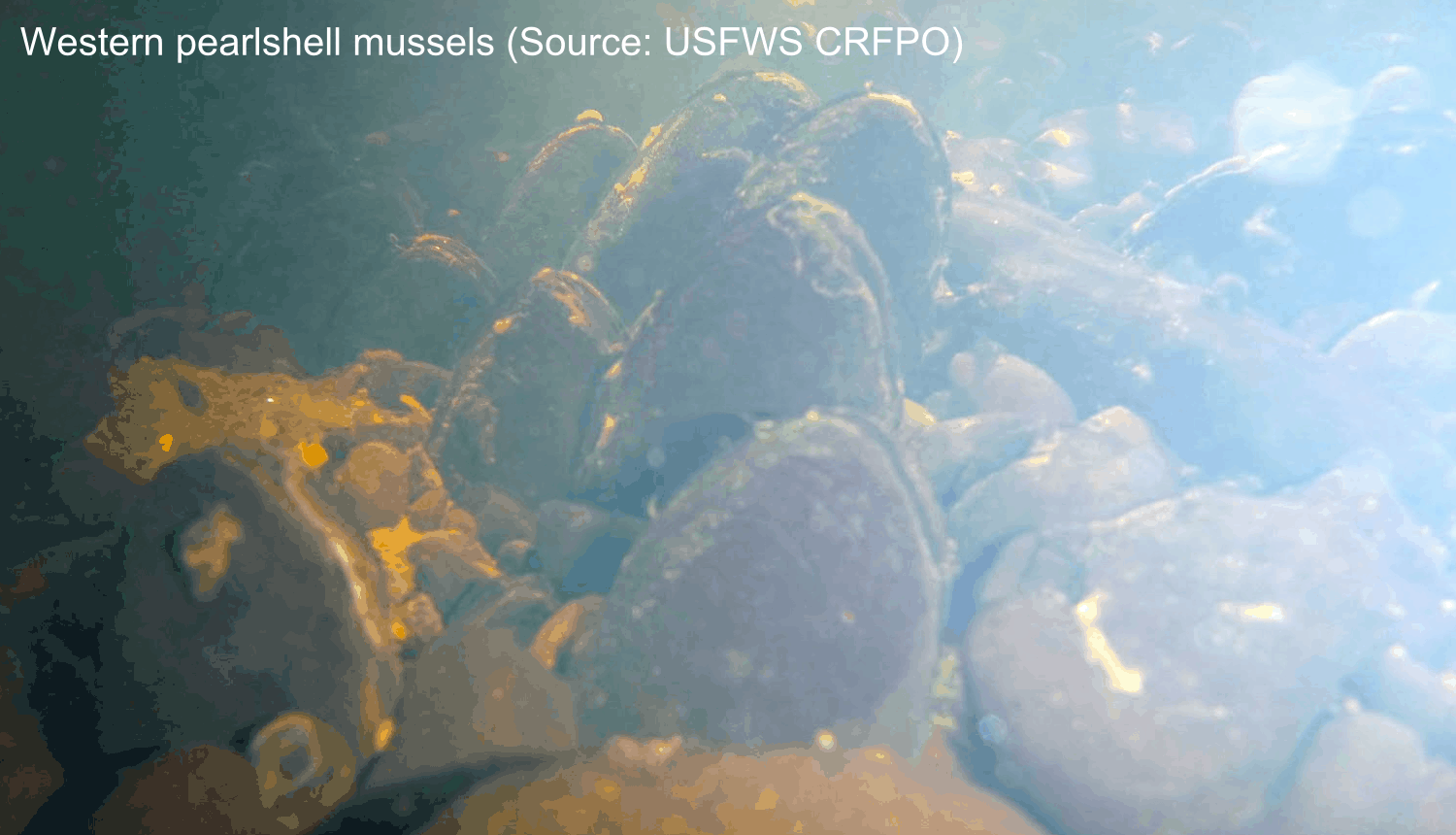
Species
Western pearlshell mussel (Margaritifera falcata)
Principal Biologist(s)
Carter Kruse, Eric Leinonen
Project Location
Southwestern Montana
Cherry Creek, Flying D Ranch, MT
Conservation Problem
Range-wide declines are thought to be primarily due to water quality concerns (sedimentation, agricultural run-off, increasing temperatures), habitat fragmentation (dams, water diversion), and declines or loss of suitable host fish species (e.g., native salmonids).
Conservation Status
Historically found across the northwestern United States, this species remains widespread in geographic area, but regional and localized declines are concerning. Documented, localized, watershed level extirpations are common. Idaho, Oregon, California, and Montana all consider the species either potentially at risk or at risk due to limited or declining population numbers (S2 or S3 NatureServe Conservation ranking). The species is likely extinct in Utah. Numbers appear more secure in Washington, but declines are suspected. The US Forest Service Region 1 considers it a Sensitive Species, and Montana Fish, Wildlife, and Parks has designated it a Species of Greatest Conservation Need.
Project Goals
The goal of this project is to establish a large and persistent population of Western pearlshell mussels (WPM) in Upper Cherry Creek that can provide individuals to other WPM restoration projects.
Objectives
This effort includes three primary objectives to:
- Conduct the experiment and research necessary to establish accepted protocols for translocation and restoration of WPMs in Montana.
- Establish a reproducing population of more than 250 WPMs in upper Cherry Creek.
- Provide WPMs for restoration elsewhere in the Madison basin.
Project Background
The Western pearlshell mussel (WPM) is Montana’s only cold water mussel, and is found in streams with low to moderate gradient and stable sand/gravel substrates. They are primarily filter-feeders and strain organic matter out of the water column. Successful reproduction depends on the presence of suitable host fish. WPM glochidia (larvae) attach to the gills of a host fish and develop for several weeks before detaching. Population persistence requires suitable habitat and water quality, males and females in close proximity, and presence of a host fish species.
In Montana, the native westslope cutthroat trout is the preferred host fish, but WPMs have been documented to use bull, brook and rainbow trout. Thus, as westslope cutthroat trout populations have declined and habitat has been fragmented (preventing (re)colonization of barren habitat), among other things, WPMs have become at risk. Since WPMs have a relatively long lifespan (50-60 years), their presence in a stream does not necessarily indicate population viability as many populations that are now dominated by older individuals are at risk of extirpation from stochastic events and lack of individuals reproducing. In Montana, WPMs have experienced significant range reductions over the last 100 years and are currently represented only by about 85 populations. Twenty or fewer of these populations are expected to be viable over the next century. Of 51 stream reaches recently surveyed in the Madison River basin of Montana, only one (Duck Creek) had a viable WPM population; lower Cherry Creek contains a small, old, and declining population of WPMs.
The successful establishment of westslope cutthroat trout in the upper 60 km of Cherry Creek on the Flying D Ranch provides a suitable backdrop against which to implement a WPM conservation effort. In 2012, Turner Biodiversity Divisions partnered with the Montana Natural Heritage Program to assess habitat suitability in the Butler and Cowboy Canyon reaches of Cherry Creek for WPM. Results suggested that multiple sections of the creek might support WPMs if the species was introduced. If a suitable donor population of WPMs can be found, transfer of WPMs to upper Cherry Creek seems to be a logical action. However, as with any declining or sensitive species, it is often times difficult to locate a donor population that is large enough, genetically suitable, and disease free.
